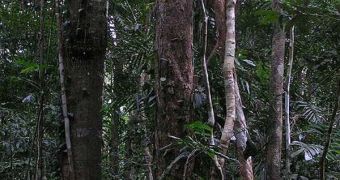Everyone known that forests act like giant sponges for atmospheric carbon dioxide (CO2), snatching the dangerous greenhouse gas from the air, and storing it in trees' leaves. What was not know was how the chemical was distributed among the forests, but a new study recently figured this out as well.
A number of satellites belonging to the American space agency were used in this investigation, which resulted in the creation of the most accurate, high-resolution map of the amount and location of CO2 in the world's forests.
The research team, led by NASA experts, says that the new datasets it produced will most likely be used a baseline for future measurements aimed at determining how much CO2 is being added in the world's atmosphere.
Understanding the planet's carbon cycle, and how the element is stored in rocks, forests and the ocean is essential for developing the most accurate climate models possible. Based on these simulations, politicians can take the necessary steps to avoid disaster.
The new maps, which were developed by a team led by experts at the Pasadena, California-based NASA Jet Propulsion Laboratory (JPL), combine both orbital and ground readings and analysis.
The investigation covers about 75 tropical countries and territories, and its main conclusion is that most of the world's stored carbon is located in the large jungles and rainforests of South America.
Details of the new research were published in the May 30 issue of the esteemed journal Proceedings of the National Academy of Sciences (PNAS). JPL expert Sassan Saatchi was the leader of the research.
“This is a benchmark map that can be used as a basis for comparison in the future when the forest cover and its carbon stock change. The map shows not only the amount of carbon stored in the forest, but also the accuracy of the estimate,” the scientist reveals.
Saatchi adds that anywhere between 15 and 20 percent of all CO2 emissions recorded annually at a global level are accounted for by forest degradation and deforestation.
“These patterns of carbon storage, which we really didn't know before, depend on climate, soil, topography and the history of human or natural disturbance of the forests. Areas often impacted by disturbance, human or natural, have lower carbon storage,” the team leader concludes.

 14 DAY TRIAL //
14 DAY TRIAL //